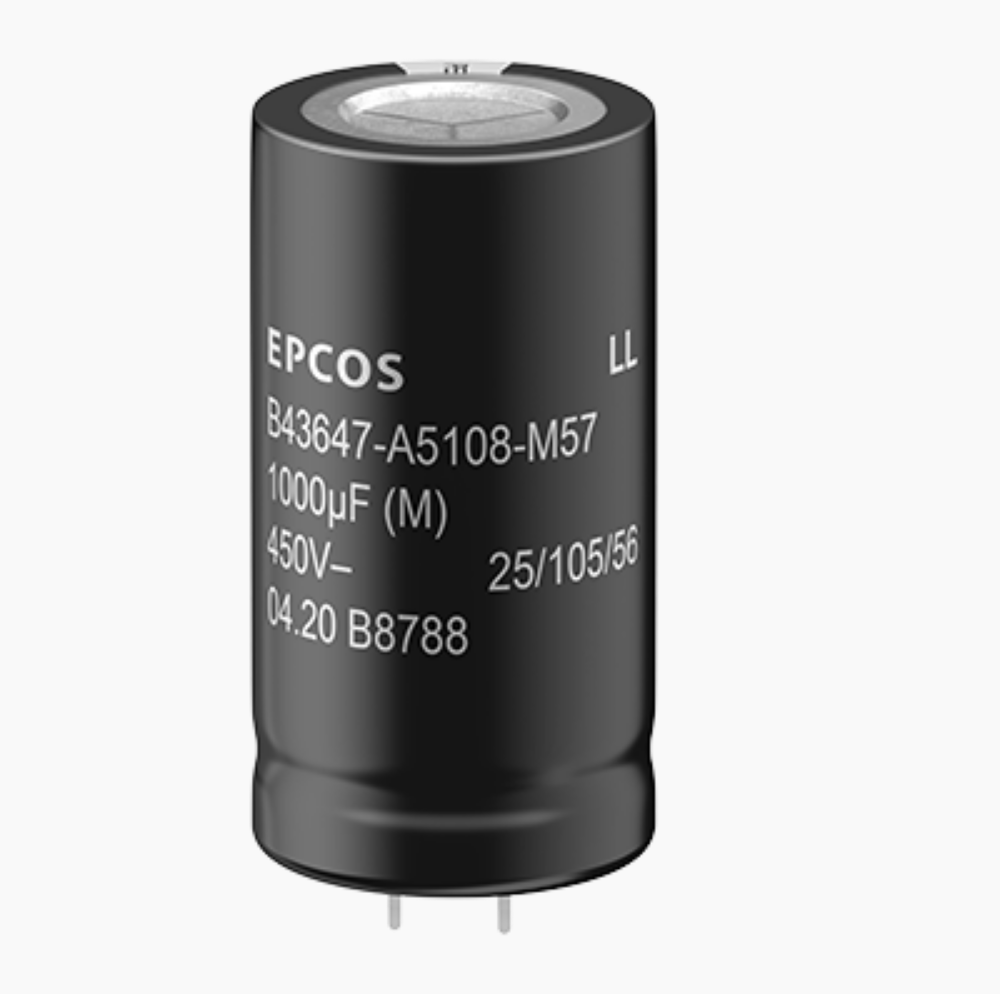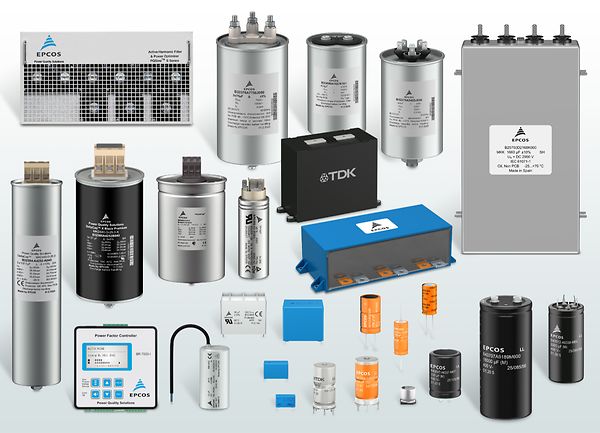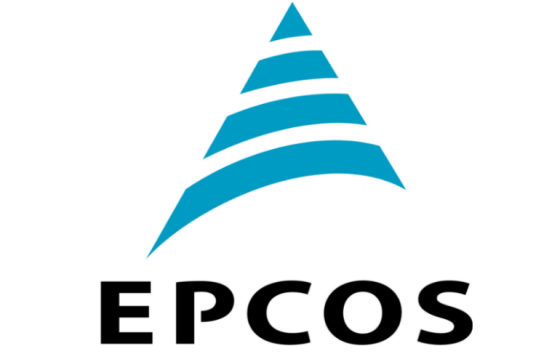EPCOS capacitor EPCOS electrolytic capacitor model code description
Released on: September 21, 2022
EPCOS capacitor EPCOS electrolytic capacitor model code description
EPCOS capacitor | EPCOS capacitor agent | EPCOS power capacitor | EPCOS inductance | EPCOS filter | EPCOS electrolytic capacitor | EPCOS film capacitance sensor

The electrolytic capacitor can only be designed according to the measured small specific capacitance point in the production process, so the actual capacity between the electrolytic capacitors produced will be large or small.
According to this situation, different tails of epcos electrolytic capacitors represent different deviations. For example, B43310-A9478-M represents a capacity deviation of plus or minus 20% of tail M; B43310-B9478-A1 indicates that the capacity deviation of tail A1 is plus or minus 15%; B43310-B9478-A represents that the capacitance deviation of Trailer A is plus or minus 10%, but generally, the capacitance deviation is basically negative, except for some ordered products.
EPCOS capacitors on hand; Product introduction: Each bolt type electrolytic capacitor produced by the EPCOS electrolytic capacitor manufacturer will be assigned a code, which can be used to trace data. After the bolt type electrolytic capacitor leaves the factory, all production records, test data and other information of the product can be queried. EPCOS launched the simplified power factor controller BR6000, epcos Epcos compensation controller, epcos Epcos factor controller, epcos Epcos microcontroller, epcos Epcos capacitor, epcos Epcos office, epcos Epcos agent, and epcos Epcos primary supplier.
EPCOS controller BR6000-R12 imported EPCOS capacitor spot MKK690-D-12,5-01; EPCOS capacitors on hand
EPCOS controller is the agent of EPCOS controller in Shanghai. EPCOS company and our company can provide customers with pre-sales training, technical consultation, after-sales service and other services, and can enjoy the fast supply cycle of EPCOS factory, direct purchasing channels and perfect technical services.
The EPCOS controller takes signal (data) acquisition, calculation and processing, analysis and judgment, and decision countermeasures as input, and then sends control commands and commands the actuator to work as output. Sometimes, it also provides a stable power supply or reference voltage for the sensor. All its functions are completed by the sum of various hardware and software. The core of the EPCOS controller is a microcomputer system with a single chip microcomputer as the main body. With the help of large-scale integrated circuits, ECU has been able to make hundreds of complex and diverse components on one or two multilayer circuit boards, package them in a box as big as a book, and shield them with aluminum shells. If intelligent functional devices and EPCOS controllers are used again, the volume of ECU can also be reduced. In terms of circuit composition, the multi-purpose electronic controller is mainly composed of power transformer, bridge rectifier circuit, amplifier circuit, thyristor trigger circuit, AC output circuit, voltage feedback circuit, electronic relay and temperature contact; The EPCOS controller is mainly composed of four parts: AC temperature sensing bridge, AC amplifier and AC active signal output.
The output information processing part of EPCOS controller BR6000-R12 EPCOS controller is to generate and amplify various control commands with only m * output by the microcomputer into control signals that can drive various actuators and output them. In recent years, the emergence of intelligent functional devices has simplified the processing part of output information, and can also be put into the microcontroller, so that the microcontroller can directly output the processed control signal, and ECU does not need another part of output information processing. The EPCOS controller is the command center of the computer, which is responsible for determining the sequence of program execution and giving the operation control commands required by various parts of the machine when executing commands. It is composed of program counter, instruction register, instruction decoder, timing generator and operation controller. It is the "decision-making body" that issues commands, that is, it coordinates and commands the operation of the entire computer system. The EPCOS controller is divided into a combined logic controller and a microprogrammed controller. Each of the two controllers has advantages and disadvantages. The design of the combinational logic controller is troublesome and the structure is complex. Once the design is completed, it cannot be modified or expanded, but it is fast; The microprogram controller is easy to design, simple in structure, and easy to modify or expand. To modify the function of a machine instruction, you only need to reprogram the corresponding microprogram. To add a machine instruction to the EPCOS controller, you only need to add a microprogram to the control memory. However, it executes a microprogram.
German EPCOS controller BR6000-R12 imports EPCOS capacitors from stock;
EPCOS controller BR6000-R12EPCOS controller In the vector control asynchronous motor speed regulating system, there are usually two ways to control the stator current: one is to obtain the instantaneous set value of the stator three-phase current after vector transformation, and the three current regulators respectively perform closed-loop regulation on the three-phase AC current, that is, the current is controlled in the three-phase static coordinate system. The other is to place the current control in the synchronous rotating coordinate system. The current loop includes d-axis current loop and q-axis current loop. The EPCOS controller controls d-axis current and q-axis current respectively. At present, d-axis current loop and q-axis current loop are usually controlled by conventional PI regulators. The main problem is that the overshoot and rapidity of q-axis current iq response are contradictory; The actual d-axis current id is easily affected by the q-axis current iq, and the anti-interference ability is not strong. The controller adopts * switching frequency operation. The efficiency and power density of the EPCOS controller are higher than those of the traditional forward converter. It is very suitable for the communication system of DC/DC and AC/DC power conversion, as well as the power supply system of industrial equipment. The EPCOS controller includes industrial power supplies with single and multiple outputs.
The BR6000 series PFC controller launched by EPCOS is now equipped with a series of additional functions. At present, the above controller can realize automatic initialization, and has the functions of parameter identification and reliability test for connecting PFC system. The recorded number of switching operations and the capacitor operating time can now be reset individually for each phase. In this way, the service life and operation time of each capacitor can be recorded separately. Another improvement is the output of the switchable stage. At present, it has reached the capacity of *, so as to realize even the immediate correction of power factor. BR6000 controller due to additional adapter.
EPCOS TSM-LC200 thyristor module is designed for 3-phase capacitors. It can switch about 200kvar correction power at rated 400VAC.
These thyristor modules can be driven by EPCOS PF controllers with transistor outputs, including BR6000-T and BR7000-T reactive power compensation controllers. But BR6000-T6R6 is different. It has six transistor outputs for dynamic correction and six relay outputs for conventional correction.
The capacitor is disconnected in case of power failure
Industrial power grids often experience brief outages. Because they only last for a few milliseconds, they are often invisible. A special critical condition is when the out of phase capacitor is reconnected to the fully charged capacitor after power failure. It can withstand voltage up to 2 × VR × 1.41。 This will cause a considerable surge current, which will produce no small stress on the capacitor.
EPCOS controller BR6000-R12 imported EPCOS capacitor off the shelf
The EPCOS capacitor can generate 3500A surge current when it is reconnected in different phases. This will cause huge stress to the capacitor and shorten its life.
These surge currents may even cause contact melting of capacitive contactors. To avoid this kind of dangerous situation, all EPCOS PF controllers have zero voltage cutoff function. In case of power failure, it will disconnect the capacitor from the circuit and reconnect it only after discharge (40s to 60s).
EPCOS capacitors can meet various power factor correction requirements. The following table shows the main PFC capacitors.
EPCOS is an enterprise in the field of industrial and consumer electronic products, committed to promoting information communication and dissemination in the modern world. The products include infotainment center technology for automobiles and standard equipment including capacitors, transformers and sensors. The company also manufactures wearable technology devices, FA systems, flash memory and solar cells. This pioneering company is committed to serving the electronics industry and working directly with customers to ensure that solutions meet their requirements. The company has 21000 employees, and its mission is to share the wind and rain, research, develop, manufacture and bring innovative technologies to the market. The company has about 20 design and production sites in Europe, and a complete sales network outside the European continent. EPCOS was acquired by TDKEurope in February 2015. Since then, the two enterprises have integrated resources to achieve better customer service and higher satisfaction.
Reactors and capacitors are connected in parallel to form a resonant circuit, which can correct the phase angle between voltage and current. Ideally, this phase angle should be 0 ° so that the load only absorbs active power.
A single load can be directly corrected by a very simple method, but there are exceptions. For example, in the practical application of industrial electronic devices or building service industry, the switching cycles of many loads have large differences, so power factor correction must be carried out. This can be well controlled automatically by using a power factor controller (reactive power compensation controller). For this purpose, TDK provides a variety of EPCOS reactive power compensation controllers. With their rich functional features, they can efficiently complete various conventional and many special calibration tasks.
EPCOS capacity.jpg
EPCOS product series, including capacitors, ferrites and inductors, piezoelectric and protective devices and sensors.
At present, electronic components and systems can be seen everywhere in electrical equipment, mainly to ensure the perfect operation of equipment. These components and systems play an important role in automobiles and trucks, industrial machine tools, electric railways, wind farms and photovoltaic power plants, as well as washing machines, LED lamps, smartphones, laptops and televisions. In all of these applications, EPCOS solutions ensure a stable power supply and protect electronic circuits from failure.
Capacitors are used in all fields of electricians and electronics to store charges and provide current and voltage filtering functions. EPCOS capacitor product portfolio includes aluminum electrolysis and film capacitors, mainly used in power supply and inverter. Power capacitors play a key role in many applications. They not only ensure reliable power supply for electric trains, but also are key components for high-voltage DC power transmission, ensuring long-distance transmission of electric energy with minimum loss.
Inductors can realize two basic electrical functions at the same time: current filtering and electromagnetic energy storage. On the contrary, ferrite is composed of an inductive magnetic core, which can gather electromagnetic fields for transmission of electrical signals and power. Inductors can be used for switching power supplies in information and communication applications, as well as automotive, industrial and entertainment electronic equipment. In addition, EPCOS also produces EMC components to ensure the * operation of various electronic equipment.

Piezoelectric and protective devices protect electronic circuits from voltage spikes and current surges. Their product portfolio includes gas discharge tubes and switch discharge tubes, thermistors, varistors, and various multilayer components (including piezoelectric actuators, CeraDiodes? And CeraLink? Capacitors). All these components are key components of vehicles, industrial equipment, household appliances and electric power engineering, smart phones, tablets and wearable devices. *.
The sensor and sensor system include various temperature sensors. For example, these temperature sensors can be used in the vehicle emission system to reduce exhaust emissions. Not only that, these components are also commonly used in household appliances and industrial equipment. In order to meet the application requirements, it is sometimes necessary to add pressure sensors and transmitters to monitor and diagnose the pneumatic and hydraulic systems, as well as control valves and filtration systems. In addition, sensors and sensor systems are also widely used in medical technology applications, such as medical devices for measuring blood pressure or artificial respiration. In addition, the sensor family also includes Tronics product family, mainly including inertial sensors, which not only have inherent sensing functions, but also can sense acceleration and rotation.
Industrial electronic applications often require extremely frequent switching of loads, such as welding equipment, presses, elevators, and various drives. EPCOS TSM series thyristor modules are very suitable for switching capacitors in these applications. It is recommended to use when the expected switching cycle exceeds 5000 times per year. The characteristics of these modules include: extremely short switching time (only 5ms), zero wear and mute switch. Because the thyristor module switches at the current zero point, the connected capacitors can be prevented from being affected by current surges and their operating life can be extended. Thyristor module is controlled by microprocessor and can automatically adapt to capacitor detuning or tuning circuit under the condition of high reactance rate up to 14%. These modules automatically monitor voltage, phase and temperature. The status is displayed by LEDs. EPCOS series thyristor modules currently include 8 types, covering the voltage range of 230VAC to 690VAC and rated power of 10kvar to 200kvar.
EPCOS thyristor module
EPCOS TSM-LC200 thyristor module is designed for 3-phase capacitors. It can switch about 200kvar correction power at rated 400VAC.
These thyristor modules can be driven by all EPCOS PF controllers with transistor outputs, including BR6000-T and BR7000-T reactive power compensation controllers. But BR6000-T6R6 is different. It has 6 transistor outputs for dynamic correction and 6 relay outputs for conventional correction.
The capacitor is disconnected in case of power failure
Industrial power grids often experience brief outages. Because they only last for a few milliseconds, they are often invisible. A special critical condition is when the out of phase capacitor is reconnected to the fully charged capacitor after power failure. The voltage it bears can reach 2 × VR × 1.41。 This will cause a considerable surge current, which will produce no small stress on the capacitor.
Capacitor current during out of phase reconnection
The capacitor can generate 3500A surge current when it is reconnected in different phases. This will cause huge stress to the capacitor and shorten its life.
These surge currents may even cause contact melting of capacitive contactors. To avoid such dangerous situations, all EPCOS PF controllers have a zero voltage cutoff function. In case of power failure, it will disconnect the capacitor from the circuit and reconnect it only after discharge (40s to 60s).
EPCOS capacitors can meet various power factor correction requirements. The following table shows the main PFC capacitors.





